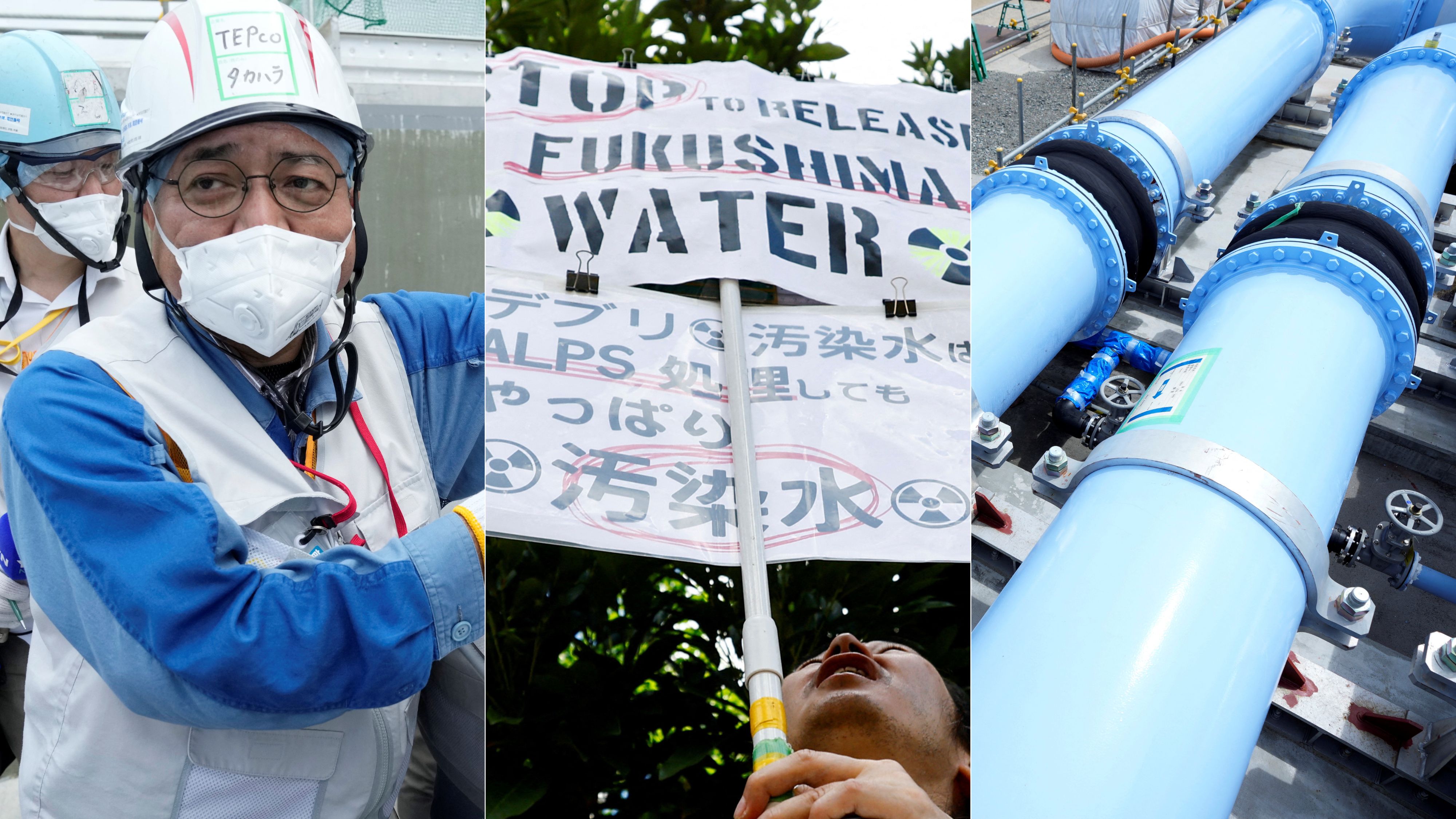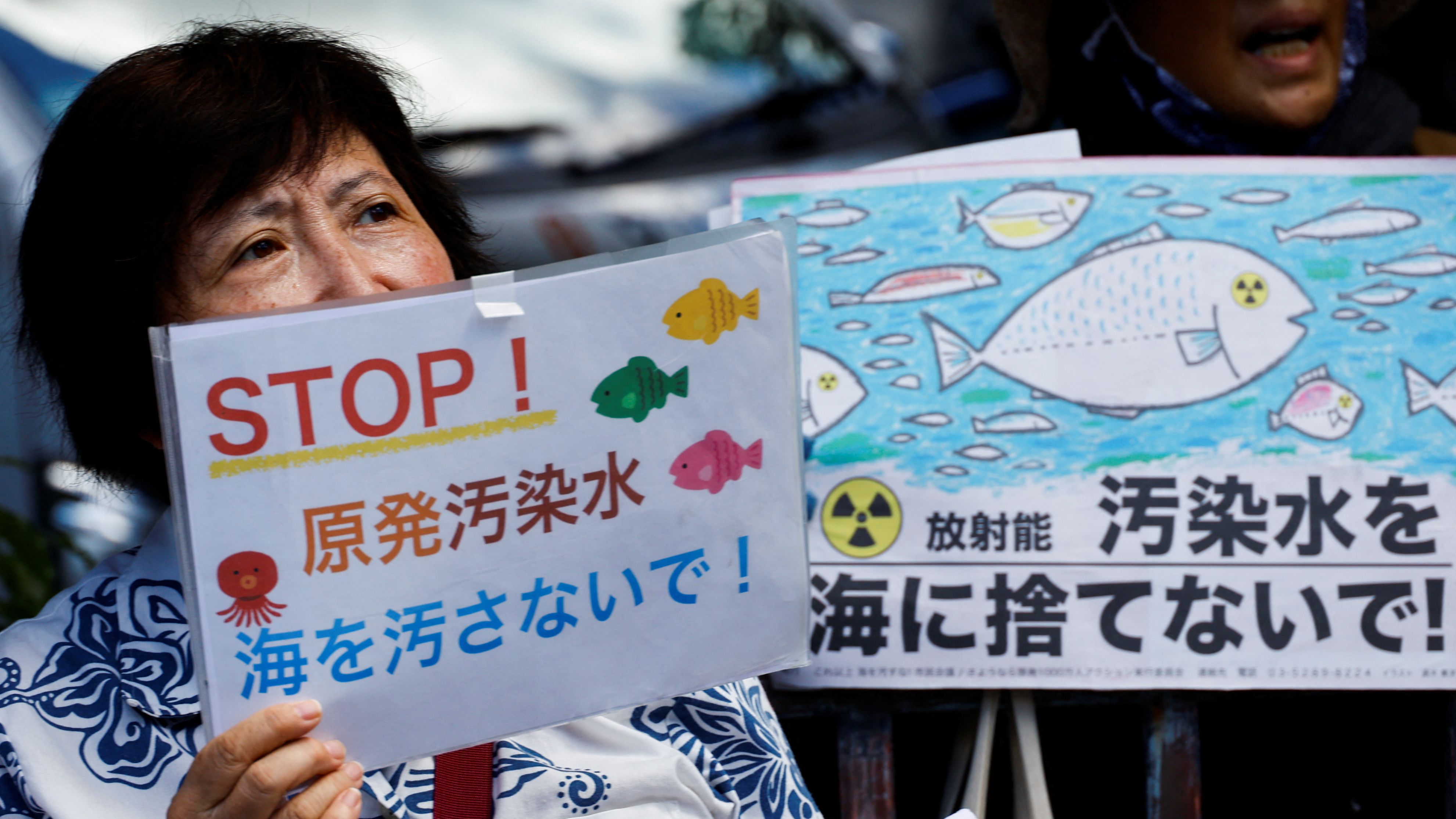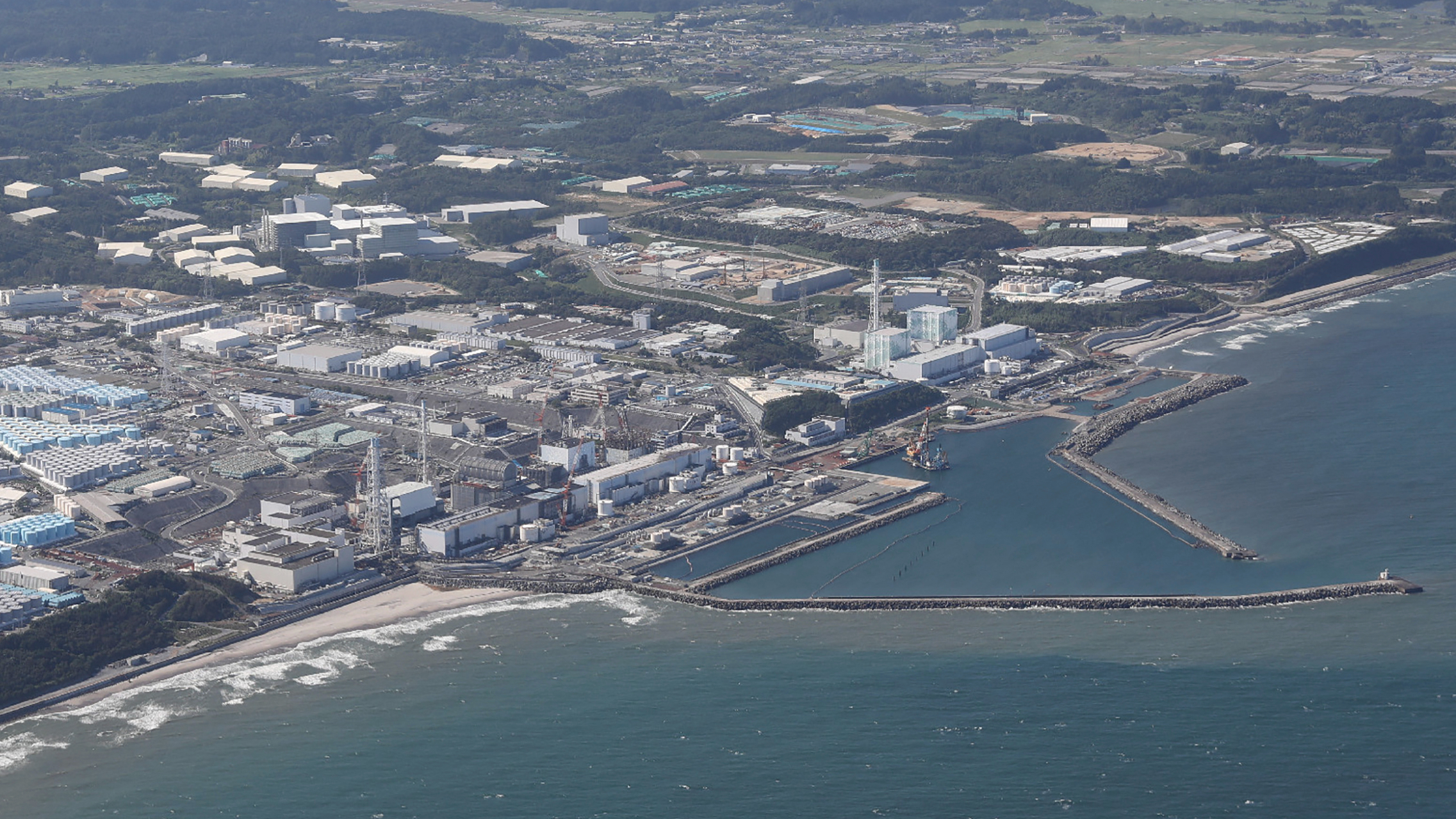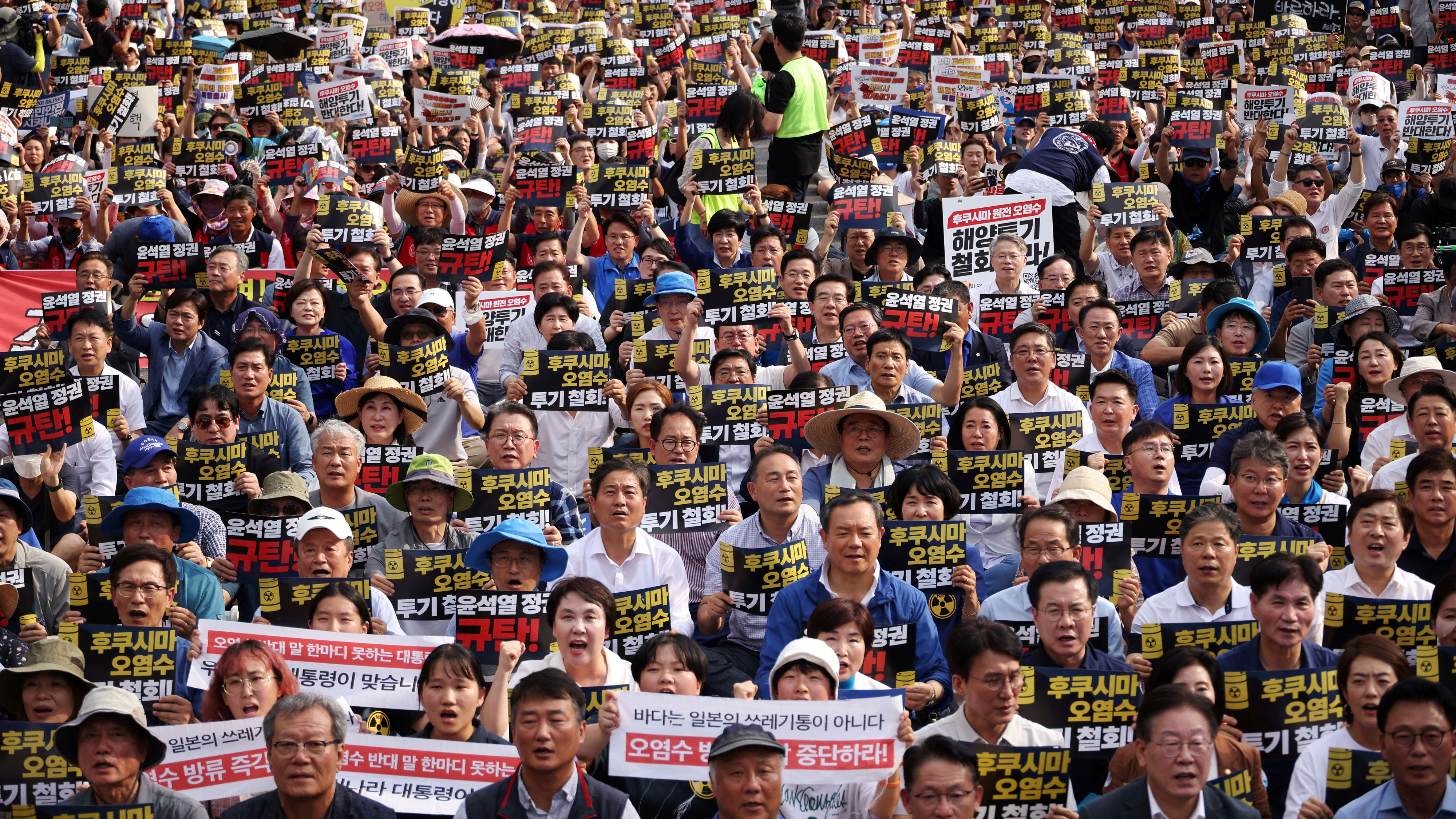
There have been big protests over the release at the plant, despite claims it is safe./ Eugene Hoshiko and Kim Kyung-Hoon/Reuters
There have been big protests over the release at the plant, despite claims it is safe./ Eugene Hoshiko and Kim Kyung-Hoon/Reuters
Japan has begun pumping over a million metric tons of treated radioactive water from the destroyed Fukushima Daiichi nuclear power plant into the Pacific Ocean, 12 years after it suffered one of the world's worst atomic accidents.
The process will take decades to complete and many countries are furious. As well as fears about damaging vital fish supplies and sensitive marine ecosystems, it has caused disquiet in a region where nuclear issues are highly sensitive.
For decades, major powers including the U.S., the UK and France used the sparsely populated South Pacific to test atomic weapons - with consequences that linger to this day.
Here's what we know about the discharge, how the water has been treated, its safety and how the world has reacted.
WHAT IS THE OPERATION?
Around 100,000 liters of water - contaminated by cooling the plant's wrecked reactors plus groundwater and rain seeping in - is collected at the site in northeastern Japan every day.
Some 1.34 million tonnes - equivalent to almost 540 Olympic swimming pools - are now stored in around 1,000 steel containers at the seaside site, and now there is no more space, authorities say.
Japan decided in 2021, after years of discussion, that it would release at most around 500,000 liters per day into the sea via a pipe one kilometer long.
Under the supervision of the International Atomic Energy Agency (IAEA), this process should take around 30 years, at a rate of 500 m3 of tritiated water evacuated per day maximum, according to TEPCO, the operator of the plant being dismantled.
The release on Thursday was the first of four scheduled between now and the end of March.

Feelings are even running high in Japan's fishing community./ Kim Kyung-Hoon/Reuters
Feelings are even running high in Japan's fishing community./ Kim Kyung-Hoon/Reuters
HOW IS THE WATER TREATED?
TEPCO says a special filtering system called ALPS has removed all radioactive elements - including caesium and strontium - except tritium. It added that the water is diluted to reduce radioactivity levels to 1,500 becquerels per liter (Bq/L), far below the national safety standard of 60,000 Bq/L.
Tritium is a radionuclide, naturally present in the oceans and whose radiological impact is low. If inhaled or ingested, tritium can pose a risk, but only very high doses are harmful to human health, experts say.
HOW SAFE IS IT?
This figure of 1,500 Bq/L is approximately seven times lower than the ceiling established by the World Health Organization (WHO) for drinking water (10,000 Bq/L). The IAEA, the UN nuclear watchdog, gave the green light to the Japanese project in July, said it met international standards and the impact on people and the environment would be "negligible."
A sample of the water from the first discharge were "well below" the planned limit of 1,500 Bq/ L.
In addition, for decades, tritium has been regularly released into water by nuclear power plants in operation around the world, as well as by nuclear waste reprocessing plants such as that of La Hague in France. Other tests of seawater near the Fukushima plant did not detect any radioactivity, according to Japan's environment ministry at the weekend.
Not everyone has been convinced though.

Tanks used for storing treated water at TEPCO's crippled Fukushima Daiichi Nuclear Power Plant in Okuma./ STR/ Jiji Press/AFP
Tanks used for storing treated water at TEPCO's crippled Fukushima Daiichi Nuclear Power Plant in Okuma./ STR/ Jiji Press/AFP
HOW HAS THE WORLD REACTED TO RELEASE?
Japan and scientific organisations say the water is safe, but environmental activists argue that not all possible impacts have been studied. Greenpeace says the filtering technology does not work and that the IAEA "completely ignored the highly radioactive fuel debris that melted down and continues every day to contaminate ground water."
Although the South Korean government has not expressed objections, many of their citizens are alarmed and have staged demonstrations - and even panic-bought sea salt. Their president Yoon Suk Yeol had a seafood lunch on Monday, clearly expressing his satisfaction.
Some other neighboring countries have been less accommodating. China, the biggest importer of Japanese seafood, has been the most vocal, calling Japan's plan irresponsible, unpopular and unilateral. Beijing has since announced a blanket ban on all aquatic products from Japan.
Solomons' Prime Minister Manasseh Sogavare - who has delayed elections and scolded Western powers - said the water release "has an impact on our people, ocean, economy and livelihood."
There was a similar message in the Fijian capital Suva on Friday, where a rare protest attracted hundreds. The release has also hit opposition in Japan itself, in particular from a fishing industry that fears its exports could plummet as consumers and governments shun their seafood.

South Korean have been protesting since the water was released in Fukushima./ Kim Hong-Ji/Reuters
South Korean have been protesting since the water was released in Fukushima./ Kim Hong-Ji/Reuters
WHAT HAS JAPAN DONE TO SOOTHE CONCERNS?
The government has spent months trying to win over sceptics at home and abroad, with everything from study tours of Fukushima to live video of fish living in the wastewater. Tokyo has also sought to counter disinformation being peddled online about the release, such as misrepresented photos of deformed fish and claims - denied by Japan - that it bribed the IAEA.
WHAT ELSE NEEDS TO BE DONE?
The far more dangerous task is the removal of radioactive debris and highly dangerous nuclear fuel from the three reactors that went into meltdown in 2011. TEPCO plans to use robots to remove the fuel but there are fears radiation levels are so high that they could even disable the machines.
The whole gargantuan process is expected to take 30 to 40 years and cost around $55 billion.
Subscribe to Storyboard: A weekly newsletter bringing you the best of CGTN every Friday
Source(s): Reuters
,AFP